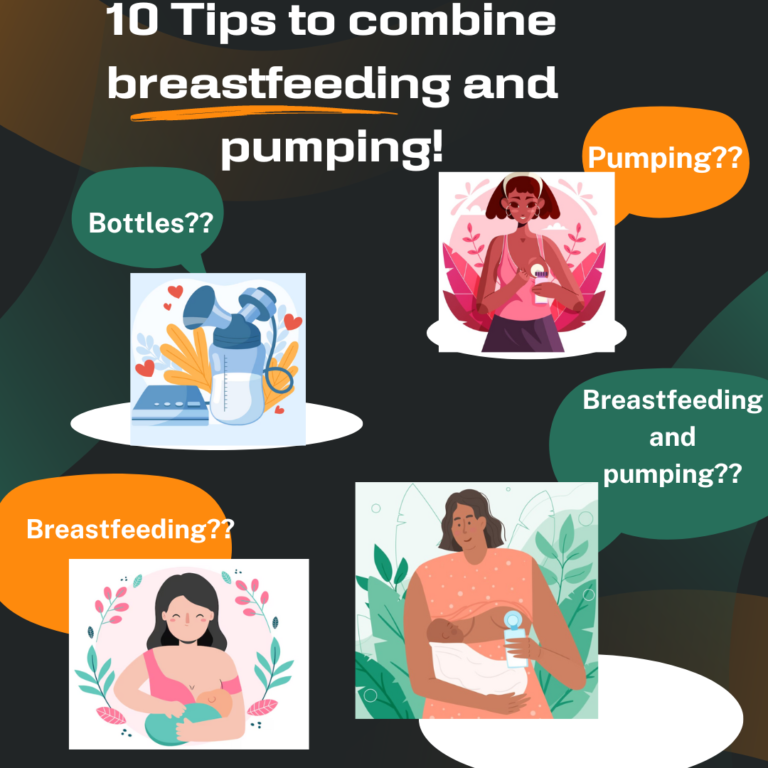Feeding Aversions in Newborns: Breastfeeding vs. Bottle Feeding

Welcoming a newborn into your life is a joyous journey. It can also come with unexpected challenges. Feeding aversions, whether related to breastfeeding or bottle feeding, can be among these challenges. In this comprehensive guide, we will explore the world of feeding aversions, their signs, and effective solutions. We’ll also dive more into breastfeeding vs. Bottle Feeding.

Aversions related to breastfeeding, their signs, and possible solutions.
Breastfeeding is a natural and beautiful way to nourish your baby. It can sometimes come with challenges, including aversions. Let’s delve into aversions related to breastfeeding, their signs, and possible solutions.
Understanding Breastfeeding Aversions
Breastfeeding is a beautiful bonding experience, but it can come with challenges, like feeding aversions. Discover the signs that your baby may be struggling with breastfeeding aversions and explore effective strategies to overcome them. From latch issues to nipple confusion, we’ve got you covered.
Signs of Breastfeeding Aversions
These aversions can be distressing for both the baby and the breastfeeding parent. It’s essential to recognize the signs and explore potential solutions to make breastfeeding a more pleasant experience.
Few of the signs are listed down below:
- Fussiness and Irritability
- Turning Away
- Crying or Arching
- Short Feeding Sessions
- Nipple Biting or Clamping
Possible Solutions for Breastfeeding Aversions
- Check for Physical Issues: Ensure there are no physical issues, such as tongue tie or oral thrush, that could be causing discomfort during breastfeeding. Consult a healthcare professional if needed.
- Observe Feeding Cues: Pay close attention to your baby’s feeding cues. Offer the breast when your baby is calm and hungry but not overly distressed.
- Create a Calm Environment: Find a quiet, comfortable place for feeding to minimize distractions and create a soothing environment.
- Experiment with Positions: Try different breastfeeding positions to find one that your baby is more comfortable with.
- Skin-to-Skin Contact: Skin-to-skin contact before and during feeds can help your baby feel more secure and relaxed.
- Express a Little Milk: Express a small amount of milk before latching to control the initial milk flow. This can be helpful if your milk ejection reflex (let-down) is forceful.
- Stay Patient and Persistent: Be patient and persistent. Sometimes, aversions are temporary and resolve with time and consistent, gentle efforts.
- Consult a Lactation Consultant: If aversions persist or worsen, consider consulting a lactation consultant or breastfeeding specialist. They can provide tailored guidance and support.

Breastfeeding aversions can be challenging, but with patience, understanding, and the right strategies, they can often be overcome. Remember that every baby is unique, and it may take some trial and error to find what works best for your little one. The most important thing is to provide your baby with nourishment and comfort in a loving and supportive environment.
Difference between Breastfeeding and Bottle Feeding Aversions
Breastfeeding and bottle feeding are both valid methods of nourishing your baby, and each has its own set of pros and cons. Here’s a comparative look at the advantages and disadvantages of both:
| Characteristics | Breastfeeding | Bottle feeding |
| Ideal Nutrition | Breast milk is nature’s perfect food for infants. It provides essential nutrients, antibodies, and hormones tailored to your baby’s needs. | Bottle feeding requires preparation, including formula mixing and sterilization of equipment.Formula lacks some of the immune-boosting properties of breast milk, and there may be a higher risk of certain infections. |
| Bonding | Breastfeeding fosters a strong emotional bond between you and your baby through skin-to-skin contact and closeness. The primary responsibility falls on the breastfeeding parent, which can be exhausting, especially during night feedings | Bottle feeding allows others to participate in feeding, giving the primary caregiver breaks. This can be the best options for moms who are suffering from post-partum depression. It also helps the father to create a bond with the baby. |
| Cost Savings | Breast milk is free, eliminating the need to purchase formula. | Formula can be costly, and there are additional costs associated with bottles and sterilization |
| Convenience | Breast milk is always ready and at the right temperature. There’s no preparation or sterilization required Note: Some parents may experience pain or discomfort, such as sore nipples or engorgement. | You have more freedom to leave your baby with a caregiver, as anyone can feed using a bottle. |
| Health Benefits | Breastfed babies often have lower rates of infections, allergies, and chronic diseases. | It’s easier to measure how much your baby has consumed. Bottle feeding allows for better control over feeding intervals. Note: Bottle feeding can generate more waste due to the use of bottles, formula containers, and energy for sterilization. |
Ultimately, the decision between breastfeeding and bottle feeding depends on your individual circumstances, lifestyle, and preferences. The studies have always suggested that the parents must choose a combination of both methods to balance the benefits of each. The key is to ensure that your baby receives the care and nourishment they need while also considering what works best for your family.
Providing tips and strategies for parents dealing with aversions, regardless of the feeding method.
Dealing with feeding aversions in your baby can be a challenging and stressful experience, regardless of whether you’re breastfeeding or bottle feeding. Here are some essential tips and strategies to help parents navigate aversions effectively:
1. Stay Calm and Patient:
- Your baby can sense your emotions. Staying calm and patient during feedings can create a more relaxed environment.
2. Observe Feeding Cues:
- Pay close attention to your baby’s cues and signals. Try to feed when your baby is calm but hungry, rather than waiting until they’re overly distressed.
3. Skin-to-Skin Contact:
- Skin-to-skin contact before and during feedings can help your baby feel more secure and relaxed.
4. Create a Soothing Environment:
- Find a quiet, comfortable place for feedings, minimizing distractions and creating a calming atmosphere.
5. Experiment with Positions:
- Different feeding positions can make a significant difference. Explore various holds to find one that your baby is more comfortable with.
6. Control Milk Flow:
- If you’re breastfeeding, you can control the milk flow by gently compressing your breast to slow down the milk ejection reflex (let-down). For bottle feeding, choose a slower-flow nipple.
7. Offer Smaller, Frequent Feedings:
- Smaller, more frequent feedings can help reduce the discomfort associated with aversions.
8. Try Dream Feeds:
- Dream feeds involve feeding your baby while they’re still mostly asleep. Some babies are more receptive to feeding in this state.
9. Seek Support and Guidance:
- Don’t hesitate to consult a healthcare professional, lactation consultant, or feeding specialist for personalized advice and support.
10. Practice Responsive Feeding:
Allow your baby to feed at their own pace. Avoid forcing or pressuring them to eat if they’re resisting.
11. Express Empathy and Love:
Reassure your baby with soothing words and gentle touches. Let them know you’re there to support them.

12. Be Open to Change:
Sometimes, what worked yesterday may not work today. Be flexible and open to trying new approaches.
13. Maintain Feeding Records:
Keeping a record of feedings, including when and how much your baby ate, can help identify patterns or triggers for aversions.
14. Consider Allergies or Reflux:
If aversions persist, explore the possibility of food allergies or reflux with your healthcare provider.
Remember that every baby is unique, and it may take time and experimentation to find the strategies that work best for your little one. Above all, prioritize your baby’s well-being and comfort, and don’t hesitate to seek professional help if aversions persist or worsen. You’re not alone on this journey, and with support and perseverance, you can help your baby overcome feeding aversions.
When and how to consult healthcare professionals or lactation consultants for feeding aversion concerns.
If feeding aversions persist, lead to weight loss or inadequate nutrition, or cause significant distress to your baby, it’s advisable to seek guidance from a healthcare expert or lactation consultant.
Conclusion
In the journey of parenting, feeding aversions can be stumbling blocks, but they need not be insurmountable. By understanding the signs, exploring solutions, and being open to professional assistance when necessary, you can navigate these challenges with confidence. Remember, the most crucial aspect is the health and well-being of your baby, and you’re not alone on this journey.
FAQ’s
Can newborns have feeding aversions?
Yes, newborns can experience feeding aversions, which can manifest during breastfeeding or bottle feeding.
What are some common signs of feeding aversions in babies?
Common signs include fussiness during feeds, turning away from the breast or bottle, and crying or arching during feeding.
When should I consult a healthcare professional for feeding aversion concerns?
If feeding aversions persist, lead to weight loss or inadequate nutrition, or cause significant distress to your baby, it’s advisable to seek guidance from a healthcare expert or lactation consultant.
Note: This blog is intended solely for educational purposes. While it provides insights into feeding aversions in newborns, it should not replace professional medical advice. Always consult with healthcare experts for personalized guidance concerning your baby’s health and feeding needs. Your baby’s well-being remains our top priority.














+ There are no comments
Add yours